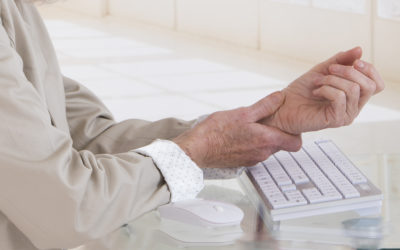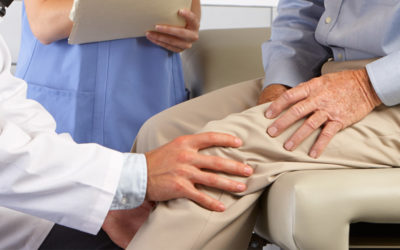Shoulder Joint Replacement
These include:
- Osteoarthritis (degenerative joint disease)
- Rheumatoid arthritis
- Post-traumatic arthritis
- Rotator cuff tear arthropathy (a combination of severe arthritis and a massive non-reparable rotator cuff tendon tear)
- Avascular necrosis (osteonecrosis)
- Failed previous shoulder replacement surgery
- Severe fractures
The shoulder is a ball-and-socket joint that enables you to raise, twist, and bend your arm. It also lets you move your arm forward, to the side, and behind you. In a normal shoulder, the rounded end of the upper arm bone (head of the humerus) glides against the small dish-like socket (glenoid) in the shoulder blade (scapula). These joint surfaces are normally covered with smooth cartilage. They allow the shoulder to rotate through a greater range of motion than any other joint in the body.
The surrounding muscles and tendons provide stability and support. Unfortunately, conditions like those listed above can lead to loss of cartilage and mechanical deterioration of the shoulder joint which can be painful. You can have a stiff shoulder that grinds or clunks. This can lead to a loss of strength, decreased range of motion in the shoulder, and impaired function. X-rays of the shoulder would show:
- Loss of the normal cartilage joint space
- Flattening or irregularity in the shape of the bone
- Bone spurs
- Loose pieces of bone and cartilage floating inside the joint
In severe cases, bone-on-bone arthritis may lead to erosion–wearing away of the bone.
Risk Factors/Prevention
Osteoarthritis is a common reason people have shoulder replacement surgery. Osteoarthritis is sometimes called “wear-and-tear” arthritis, typically affecting older individuals. Over time, the shoulder joint slowly becomes stiff and painful. Unfortunately, there is no way to prevent the development of osteoarthritis.
A severe fracture of the shoulder is another common reason people have shoulder replacements. When the shoulder is injured by a hard fall or car accident, it may be very difficult for a doctor to put the pieces back together. If the upper arm bone is shattered, a surgeon may recommend a shoulder replacement. Older patients with osteoporosis are most at risk for a severe shoulder fracture.
Long-standing rotator cuff tears may develop cuff tear arthropathy. In this injury, the changes in the shoulder joint, due to the rotator cuff tear, may lead to arthritis and destruction of the joint cartilage.
Avascular necrosis is a condition in which the bone of the humeral head dies due to a lack of blood supply. Chronic steroid use, deep-sea diving, severe fracture of the shoulder, sickle cell disease, and heavy alcohol use are risk factors for avascular necrosis.
Symptoms
Individuals with arthritis typically describe a deep ache within the shoulder joint, where the pain feels worse with movement and activity, then eases with rest. As arthritis progresses, the pain may occur even when you rest, often causing pain at night severe enough to prevent a good night’s sleep. The shoulder may make grinding or grating noises when moved, or may catch, grab, clunk, or lock up. Over time, loss of motion and/or weakness in the affected shoulder may occur. Simple daily activities like reaching into a cupboard or getting dressed may become increasingly difficult.
Treatment Options
Treatment of an arthritic shoulder starts with rest, exercise, and taking arthritis medications. Resting the shoulder and applying moist heat can ease mild pain. After strenuous activity, an ice pack may be more effective at decreasing pain and swelling.
Physical therapy may be helpful when arthritis is in the early stages. It helps maintain joint motion and strengthen the shoulder muscles. Physical therapy is less effective when arthritis has advanced to the point that bone rubs on bone. When this is the case, physical therapy may make the shoulder hurt more.
Arthritis medications, called nonsteroidal anti-inflammatories (NSAIDs), can control arthritis pain. Certain NSAIDs may be purchased over the counter, while others require a prescription. Periodic cortisone injections into the shoulder joint can provide temporary pain relief, while excessive cortisone shots may have adverse effects.
Treatment Options: Surgical
If nonoperative treatments fail, shoulder replacement surgery may be needed. Shoulder replacements are usually done to relieve pain.
There are several different types of shoulder replacements. The usual total shoulder replacement involves replacing the arthritic joint surfaces with a highly polished metal ball attached to a stem, and a plastic socket.
If the bone is of good quality, your surgeon may choose to use a non-cemented or press-fit humeral component. If the bone is soft, the humeral component may be implanted with bone cement. In most cases, an all-plastic glenoid component is implanted with bone cement. Implantation of a glenoid component is not advised if:
- The glenoid has good cartilage
- The glenoid bone is severely deficient
- The rotator cuff tendons are irreparably torn
Bone-on-bone osteoarthritis and intact rotator cuff tendons are generally good indicators that conventional total shoulder replacement may be necessary.
Depending on the condition of the shoulder, your surgeon may replace only the ball. Sometimes, this decision is made in the operating room at the time of the surgery. Some surgeons replace the ball when it is severely fractured, and the socket is normal.
Another type of shoulder surgery, known as reverse total shoulder replacement, is typically for people who have:
- Completely torn rotator cuffs
- The effects of severe arthritis (cuff tear arthropathy)
- Had a previous shoulder replacement that failed
For these individuals, a conventional total shoulder replacement can still leave them with pain. They may also be unable to lift their arm from their side past a 90-degree angle which can be severely debilitating. In reverse total shoulder replacement, the socket and metal ball are switched. That means a metal ball is attached to the shoulder bone and a plastic socket is attached to the upper arm bone, allowing the patient to use the deltoid muscle instead of the torn rotator cuff to lift the arm.
Shoulder replacement surgery is highly technical and your surgeon will evaluate your situation carefully and work with you on a personalized care plan. If you have any questions or concerns don’t hesitate to discuss with your provider.
Before surgery, a preoperative medical evaluation by a family practice physician may be required. Cardiac patients should see their cardiologist as well. It is recommended you should stop taking the following medications, two weeks before surgery, as they can thin the blood and can lead to excessive bleeding during surgery:
- Nonsteroidal anti-inflammatory medications (aspirin and ibuprofen such as Motrin® and Advil®)
- Most arthritis medications
The surgery is performed on an inpatient basis, with most patients discharged from the hospital on the second or third day after the operation.
Rehabilitation
A careful, well-planned rehabilitation program is critical to the success of a shoulder replacement. You usually start gentle physical therapy the first day after the operation. You will wear an arm sling during the day for the first several weeks after surgery and at night for 4 to 6 weeks. Within 2 weeks after surgery, most patients can perform simple activities such as eating, getting dressed, and grooming. Driving a car is not allowed for 6 weeks after surgery.
Here are some “do’s and don’ts” for when you return home:
- Don’t use the arm to push yourself up in bed or from a chair because this requires forceful contraction of muscles.
- Do follow the program of home exercises prescribed for you. You may need to do the exercises 4 to 5 times a day for a month or more.
- Don’t overdo it! If your shoulder pain was severe before the surgery, the experience of pain-free motion may lull you into thinking that you can do more than is prescribed. Early overuse of the shoulder may result in severe limitations in motion.
- Don’t lift anything heavier than a glass of water for the first 6 weeks after surgery.
- Do ask for assistance. Your physician may be able to recommend an agency or facility if you do not have home support.
- Don’t participate in contact sports or do any repetitive heavy lifting after your shoulder replacement.
- Do avoid placing your arm in any extreme position, such as straight out to the side or behind your body for the first 6 weeks after surgery.
Many patients have an improved quality of life after shoulder replacement surgery. They typically experience less pain, improved motion and strength, and better function.
Related Services and Conditions
Sports Rehabilitation
The recovery process after an injury or illness can be frustrating and time consuming. Vista’s physical and occupational therapists help patients improve strength, increase mobility and decrease pain. Treatment methods include heat therapy, electrical stimulation,...
Rotator Cuff Repair
The shoulder has the greatest range of motion of any joint in the body, but that very flexibility makes it prone to injury and wear. Many problems are caused by repeated overhead motions for a long period of time. Athletes and do-it-yourselfers are especially...
Nerve Decompression Surgery
Nerve disorders like carpal or cubital tunnel syndrome may start with mild discomfort, but over time, can interfere with both your life and work. And, while treatments like medication may help, sometimes surgery is your best solution for long-term relief. At [sc...
Knee Ligament Repair
Your knee is the largest joint in your body, which also makes it vulnerable to injury or other problems. Sports, exercise and general wear and tear can cause muscle strains, tendinitis and more serious injuries—including ligament tears. With proper treatment, this can...
Arthroscopic Surgery
Joint pain can really hurt, especially when it keeps you from what you need or love to do. At , we can help you get back on track. That includes minimally invasive arthroscopic surgery to treat a variety of hip, knee and shoulder conditions....
Total Hip Replacement
Whether you have just begun exploring treatment options or have already decided with your orthopedic Surgeon to undergo hip replacement surgery, this information will help you understand the benefits and limitations of this orthopedic treatment. You will learn… How a...
Knee Replacement
Your knee is the largest joint in your body, which makes it vulnerable to injury and other problems. Sports, exercise, and general wear and tear can cause muscle strains, tendinitis, and more serious injuries. When medications and other treatments can’t keep your knee...
Anterior Hip Replacement
In addition to performing traditional orthopedic procedures, the orthopedic surgeons at use minimally invasive techniques, which often allow for better precision, with less incision. That includes the direct anterior approach to hip...
Joint Replacement
Considering joint replacement surgery? We know it may seem overwhelming. That's why at , orthopedic specialists make the joint replacement journey a little easier. If pain from bone, joint, ligament, or muscle problems is keeping you from...
Orthopedics
Orthopedic doctors specialize in the diagnosis and treatment of disorders of the bones, joints, tendons, ligaments and muscles. We know these injuries and conditions can be painful, so we’re here to help with both non-surgical and surgical care for: Joint pain and...










